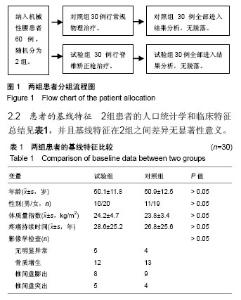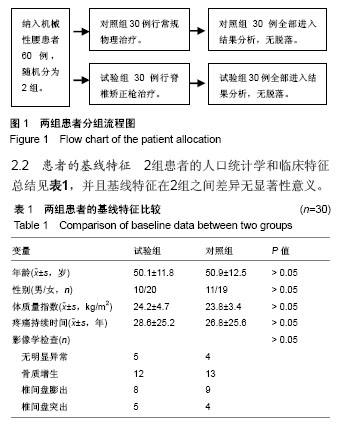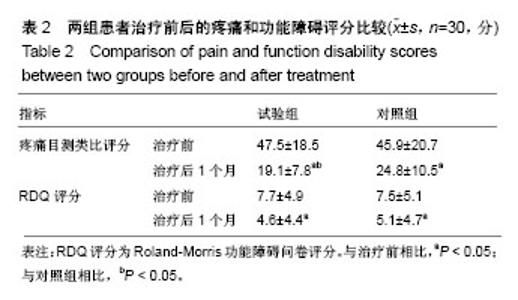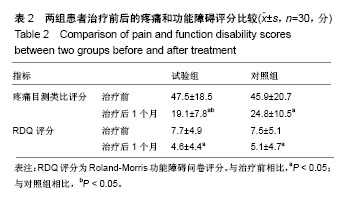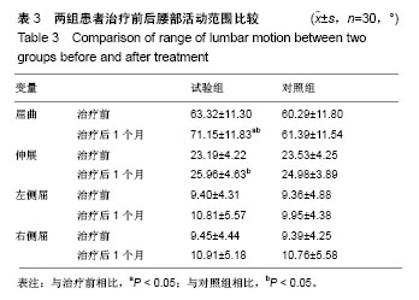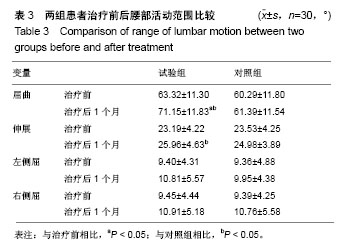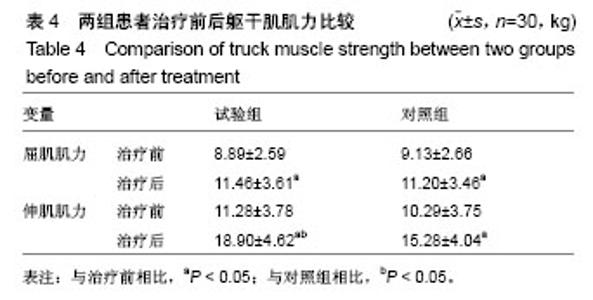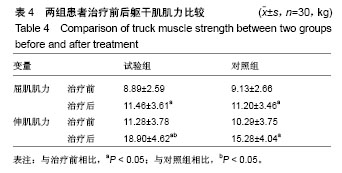| [1] Durmus D, Akyol Y, Alayli G, et al. Effects of electrical stimulation program on trunk muscle strength, functional capacity, quality of life, and depression in the patients with low back pain: a randomized controlled trial. Rheumatol Int. 2009;29(8):947-954. [2] Ferreira ML, Ferreira PH, Latimer J, et al. Relationship between spinal stiffness and outcome in patients with chronic low back pain. Man Ther. 2009;14(1):61-67. [3] Stubbs M, Harris M, Solomonow M, et al. Ligamento-muscular protective reflex in the lumbar spine of the feline. J Electromyogr Kinesiol. 1998;8(4):197-204. [4] Bronfort G, Maiers MJ, Evans RL, et al. Supervised exercise, spinal manipulation, and home exercise for chronic low back pain: a randomized clinical trial. Spine J. 2011;11(7):585-598. [5] Giles LG, Muller R. Chronic spinal pain syndromes: a clinical pilot trial comparing acupuncture, anonsteroidal anti-inflammatory drug, and spinal manipulation. J Manipulative Physiol Ther. 1999;22(6): 376-381. [6] 陈一,俞晓杰,施海涛,等.机械力量脊椎矫正治疗老年性腰痛的临床疗效研究[J].老年医学与保健,2015,21(6):380-383,390.[7] Goodsell M, Lee M, Latimer J. Short-term effects of lumbar posteroanterior mobilization in individuals withlow-back pain. J Manipulative Physiol Ther. 2000;23(5):332-342. [8] Nansel D, Peneff A, Cremata E, et al. Time course considerations for the effects of unilateral lower cervicaladjustments with respect to the amelioration of cervical lateral-flexion passive end-range asymmetry. J Manipulative Physiol Ther. 1990;13(6):297-304. [9] Colloca CJ, Keller TS. Electromyographic reflex responses to mechanical force, manually assisted spinal manipulative therapy. Spine (Phila Pa 1976). 2001;26(10):1117-1124. [10] Indahl A, Kaigle AM, Reikeras O, et al. Interaction between the porcine lumbar intervertebral disc, zygapophysial joints, and paraspinal muscles. Spine (Phila Pa 1976). 1997;22(24): 2834-2840. [11] Cholewicki J, McGill SM. Mechanical stability of the in vivo lumbar spine: implications for injury andchronic low back pain. Clin Biomech (Bristol, Avon). 1996;11(1):1-15. [12] Ng JK, Kippers V, Parnianpour M, et al. EMG activity normalization for trunk muscles in subjects with and without backpain. Med Sci Sports Exerc. 2002;34(7):1082-1086. [13] Fritz JM, Hebert J, Koppenhaver S, et al. Beyond minimally important change: defining a successful outcome of physicaltherapy for patients with low back pain. Spine (Phila Pa 1976). 2009;34(25):2803-2809. [14] Fritz JM, Koppenhaver SL, Kawchuk GN, et al. Preliminary investigation of the mechanisms underlying the effects ofmanipulation: exploration of a multivariate model including spinal stiffness, multifidus recruitment, and clinical findings. Spine (Phila Pa 1976). 2011;36(21):1772-1781. [15] Dishman JD, Bulbulian R. Spinal reflex attenuation associated with spinal manipulation. Spine (Phila Pa 1976). 2000;25(19): 2519-2524; discussion 2525. |
